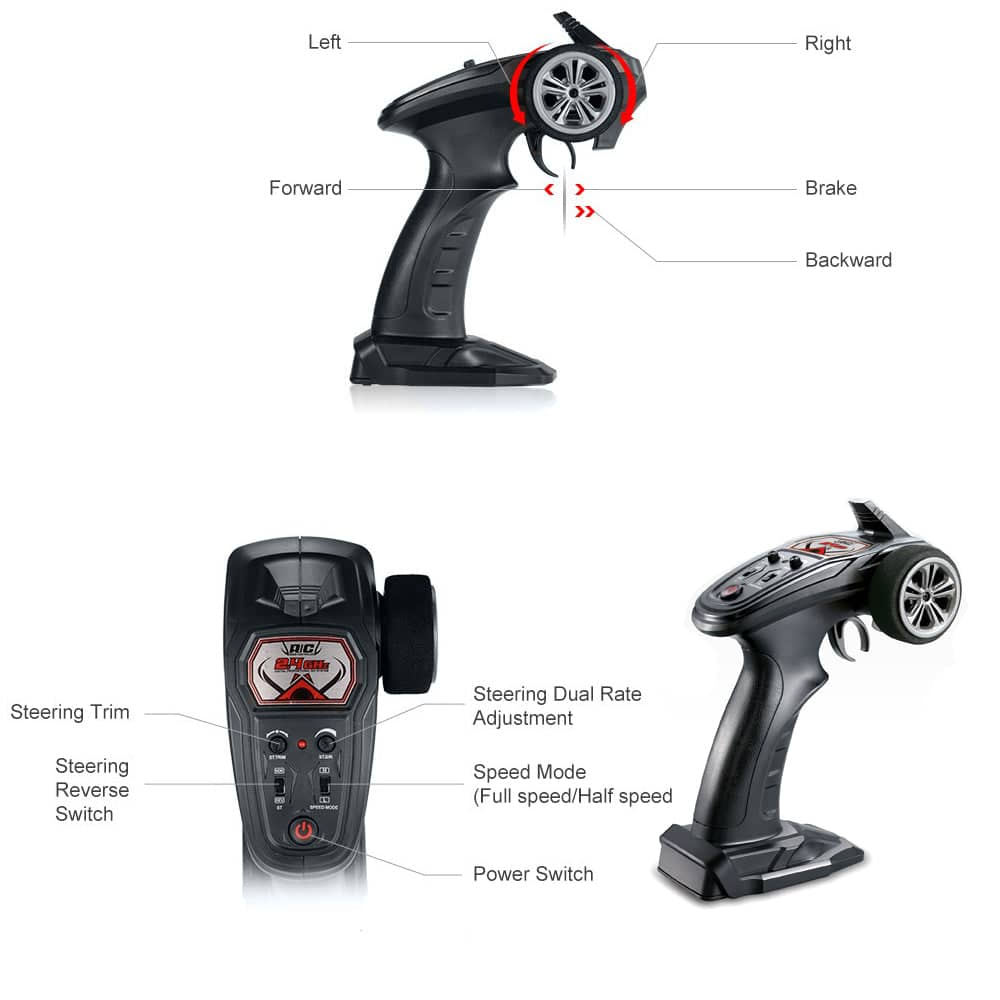
Throttle Centering:
Throttle centering ensures your RC car's acceleration and braking remain neutral when the throttle trigger is at rest.
To calibrate throttle centering, follow these steps:
-
-
- Turn on your transmitter and RC car.
-
- On small cars, hold the car in such a way that the wheels cannot make contact with you or any surface, and on large powerful cars remove the wheels completely for safety.
- Pull the throttle trigger to full throttle and release it.
- The car's wheels should not spin when the trigger is released. If they do, adjust the trim knob until the wheels stop moving.
Steering Centering:
Steering centering ensures that your RC car's wheels return to a neutral position when you release the steering wheel or stick.
To calibrate steering centering, follow these steps:
- Turn on your transmitter and RC car.
- Ensure the car is on a level surface.
- Turn the steering wheel or stick to full left and release it.
- The car's front wheels should return to a centered position. If not, adjust the trim knob until they do.
- Now that you are more or less centered, drive the car forward and adjust the steering centre so that the car drives straight and does not slowly drift to the left or right.
 Steering Dual Rates:
Steering Dual Rates:
Steering dual rates allow you to adjust the sensitivity of your RC car's steering, making it more responsive or less sensitive to your input.
To adjust steering dual rates, follow these steps:
- Access the dual rate settings on your transmitter (consult your transmitter's manual for specifics).
- Increase the rate for sharper, more responsive steering, or decrease it for smoother, less twitchy steering.
- Be careful not to over-adjust the dual rates as this could cause binding which will damage your servo or steering parts.
Exponential Steering:
Some transmitters offer exponential steering adjustments, which allow for nonlinear response to steering inputs. Experiment with exponential settings to find the balance between precise control and gradual steering response.
Throttle and Brake Trim:
The throttle and brake trim knobs on your transmitter fine-tune the neutral position and sensitivity of the throttle and brake triggers. Adjust these knobs until your RC car accelerates and brakes smoothly without any unwanted movement.
Conclusion:
Mastering your RC car transmitter's functions like throttle centering, steering centering, and steering dual rates can significantly enhance your driving experience. Take the time to understand and calibrate these features according to your preferences and track conditions. Remember to consult your transmitter's manual for specific instructions, as transmitter designs may vary. With practice and fine-tuning, you'll be able to achieve precise control over your RC car, making each race or bash an exhilarating experience.
